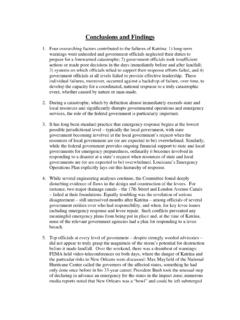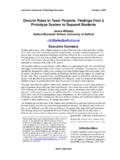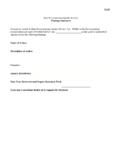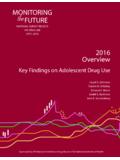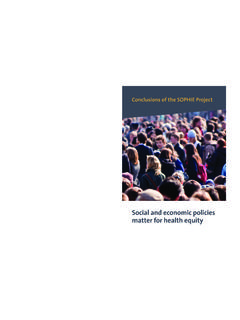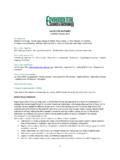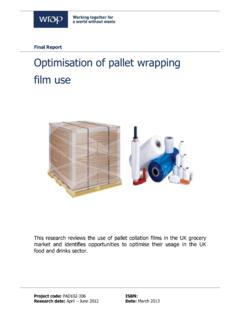Transcription of SAMPLE REPORT ON FINDINGS & RECOMMENDATIONS
1 : : . REPORT ON FINDINGS & RECOMMENDATIONSP repared for McGill University, York University and otherHuman Resources Development Programs for reviewing theProfessional Selling Skills & Capabilities Textbook Assignmentfrom 'Managing Performance through Training & Development'Nelson Press ISBN 0-17-616648-3A Review of Assessment Resultsand Job Performances[1998 2002 Implementations] 1998 2005 Inc. All Rights ReservedSample REPORT on FINDINGS and RecommendationsSkills & Capabilities AssessmentsPage REPORT on FINDINGS & RecommendationsTABLEOFCONTENTSSECTION TITLEPAGE NUMBERTABLE OF CONTENTSiEXECUTIVE SUMMARYiiAssessment Categories and Result Comparisons 1 Relationship of Skills & Capabilities to Psychometric Results7 Skills & Capabilities Assessments Findings8 Skills & Capabilities Assessments RECOMMENDATIONS 10 Appendices INDEX14 Skills & Capabilities Assessments - Design Methodology & Construct Validation15 Skills & Capabilities Assessments - SAMPLE Performance Charts17 Five Levels of Learning - Canadian HR Reporter Article19 Training for Competency vs.
2 Training for Knowledge - Canadian HR Reporter Article21 Three3 Learning Matrix23 SAMPLE REPORT - Management Skills & Capabilities 1998 2005 Inc. All Rights ReservedSample REPORT on FINDINGS and RecommendationsSkills & Capabilities AssessmentsPage REPORT on FINDINGS & RecommendationsExecutive SummaryAssessment Objectives, Comparison ofAssessment Scores to Performance Results, &Other FindingsAssessment ObjectivesThese Skills & Capabilities Assessments were created to support the recruiting selection,development and alignment of best practices personnel to roles and primary objectives of Skills & Capabilities Assessments are to SAMPLE , measure, andreport on strengths, identify gaps in knowledge and judgments, and to evaluate the level ofjob related complex competencies that each individual demonstrates.
3 This assists andenables Managers in putting the best people into the right roles with the necessarycompetency to meet and fulfil client needs and secondary objective for the Skills & Capabilities Assessments is to measure and identifyboth individual and organizational learning opportunities that can be quickly and directlyapplied to both actions and performance results. This process helps to increase the ROI ontraining third objective of the Skills & Capabilities Assessments is to measure the overallcompetency of both new hires and employees leaving the role, to measure theeffectiveness of recruiting and retention of top performers. This helps to support andincrease both the ROI and ROE of corporate intellectual , Skills & Capabilities Assessments are intended to provide additional support forongoing identification, creation, and implementation of programs specifically designed toimprove sales performance development for both individuals and the organization.
4 1998 2005 Inc. All Rights ReservedSample REPORT on FINDINGS and RecommendationsSkills & Capabilities AssessmentsPage of OverallSkills & Capabilitiesto Job PerformanceLinking Assessment Scores to Business ResultsPerhaps the most essential question for this REPORT to answer is what relationship individualAssessment scores have to real performance results. Because this question is at the heart of thevalue, credibility and usability of the Assessment conclusions, we have chosen to open this reportwith review of those FINDINGS :Skills & Capabilities Performance Averages [Overall Averages]To PlanIncentivesComplaintsProfitabilityQua lity Top Quartile 111%112%20% 2nd Quartile96%109%16% 3rd Quartile93%93%43% 4th Quartile95%87%21% 1 The following table shows the relationship between scores and personnel & Capabilities Transfers &Terminations [Overall Result]
5 Left FirmChanged PositionsTOTAL Top 2nd 3rd 4th 2 63% of those who left scored in the top two Quartiles on Skills & Capabilities 57% of people who left their roles scored in the top two Quartiles on Skills & Capabilities 72% of people who left the role with scores in the bottom two Quartile were retainedNOTE:These numbers represent a consolidation of data from several firms. For the purpose of both confidentiality andconsistency, dollar figures and specific definitions of performance measurements have been reported in generic terms. 1998 2005 Inc. All Rights ReservedSample REPORT on FINDINGS and RECOMMENDATIONS Skills & Capabilities AssessmentsPage Categoriesand Comparisons of ResultsMeasuring & Managing theRight Skills & CapabilitiesCommunication, Sales, & Relationship Building SkillsThe original Skills & Capabilities Assessments were developed to SAMPLE and evaluate thenegotiating and influencing (Relationship Selling) skills of professionals and salespeople.
6 Beforereviewing the categories and sub-categories of skills being measured, the following table provides acomparison between results across SAMPLE segments on those common influencing skills:Communication and Negotiating (Selling) Skills & Capabilities AssessmentsPERFORMANCE AVERAGES BY 2 FINDINGS Skills & Capabilities Assessments score the same gaps in core listening and questioning skills that arereported in Industry Benchmarking reports and Customer Satisfaction surveys Sales and negotiating training (generally) results in a negative impact on performance. The GeneralPopulation SAMPLE averages approximately sales or negotiating training programs, the averaged (primarily winning negotiating strategies) , and the insurance industry had average.
7 The banking industry averaged sales and negotiating programs over the past tenyears, well above that of other SAMPLE groups None of the sales and negotiating training programs reported and reviewed incorporate skill andcompetency development of the fundamentals of communication or decision making principles -concentrating instead on processes and techniques to lead customers to desired and additional emphasis on core communication and influencing skills is required. 1998 2005 Inc. All Rights ReservedSample REPORT on FINDINGS and RECOMMENDATIONS Skills & Capabilities AssessmentsPage 3 LISTENINGPARTICIPATIVE Actively acknowledging the speaker Supporting and encouraging the speaker Making the best possible use of appropriate posture, gestures.
8 And expressions to confirm interest andinvolvement in discussionsSITUATIONAL Identifying information based the context it is presented in Recognizing when information is being presented in either a positive or negative context to influence thelistener's judgment Differentiating and discerning meaning in messages involving nuance or ambiguity Validating the relevance of the information to the topic of discussion Sensitivity to social, cultural, and situational factorsENVIRONMENTAL Understanding and managing the influence of other listeners in a group setting Minimizing the effects of noise and factors of location to improve concentrationNON-VERBAL Ability to recognize and interpret the non-verbal clues and cues that add to the effective meaning of thespeaker Ability, in a socially and culturally acceptable manner, to use non-verbal clues and cues as aparticipative listenerFINDINGSSome of the more common and consistent gaps, issues, and opportunities for improving ListeningSkills come from the following areas: Overconfidence in listening abilities is prevalent in all samples .
9 This is particularly true with individualswho scored in the bottom two Quartiles. It is also true for the majority of Managers tested at the sametime. Overconfidence is a proven barrier to both performance and to learning effectiveness. One of the more prevalent, and disconcerting problems identified is the assumption of superiorknowledge and understanding and the importance of interrupting or controlling content being presentedby others Awareness of the influence that personal experience and bias have in interpreting and understandingwhile listening are substantially lower in the banking SAMPLE than in all other groups The banking SAMPLE demonstrated one of the lowest scores for areas involved in understanding andavoiding listening behaviors that can negatively influence the listener's presentation, understanding andjudgmentCONCLUSIONL istening (comprehension)
10 Is a foundation skill, required to support questioning, presenting, anddecision activities. The problems identified above are compounded by a variety of techniques andhabits that have been introduced that may encourage the use of assumptions and superiorknowledge to (unduly) direct and control discussions, including those related to needs analysis andfact finding. While most industry SAMPLE scores are low, scores for the general population arehigher indicating that the public will more readily recognize and react to poor listening problem in building relationships with clients, this also places the tested individuals at asubstantial disadvantage in discussions and negotiations in competitive situations.
